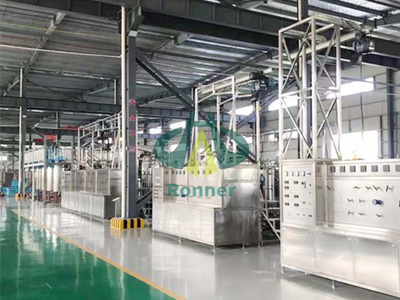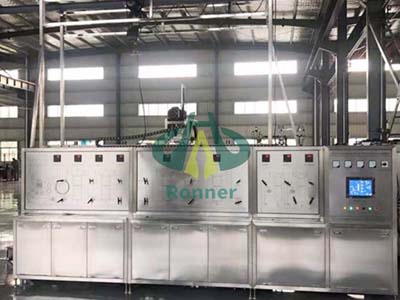How Do Supercritical Fluid Processes Work?
The use of supercritical CO2 fluid extractor is a clean extraction method. Since the whole process does not use organic solvents, there are no residual solvents in the extract, thereby preventing the existence of harmful substances to the human body and pollution to the environment during the extraction process, and ensuring 100% pure naturalness.
The use of X-Ray Inspection System is a clean extraction method. Since the whole process does not use organic solvents, there are no residual solvents in the extract, thereby preventing the existence of harmful substances to the human body and pollution to the environment during the extraction process, and ensuring 100% pure naturalness.
How do supercritical fluid processes work?
Here are more details on some of the major processes involving supercritical fluids.
Extraction
The main advantage of supercritical carbon dioxide (CO 2 ) over the solvents used in extraction processes is its high diffusivity and ability to selectively condition properties to selectively extract different components. Once dissolved in supercritical CO 2 , decompression releases the extracted components and returns the CO2 to the gas, which can then be harmlessly evaporated into the air or recovered by condensation.

Supercritical CO2 Fluid Extractor
Sterilization
Supercritical fluids can be used to inactivate or destroy certain bacteria, fungi and yeasts by breaking or destroying cell walls under high pressure, and therefore can be used for the sterilization of food and medical devices.
Impregnation
Supercritical fluid impregnation involves the delivery of an active substance to an inert substrate. In its gaseous state, CO2 leaves the target substance impregnated with the active substance. This makes it possible to impregnate solid substances with active compounds. Examples include textile dyeing, impregnation of wood and tanning of leather.
Purification
Examples of the high level of purification that can be achieved by chromatography of extracted substances using supercritical fluids include vegetable oils, plant extracts, polymers and fish oils.
Chemical Reactions
Supercritical fluids can increase the solubility of reactants and products, thereby increasing reaction rates. Examples include biomass conversion, fuel processing, various forms of catalysis and polymerization.
Drying
Since there is no surface tension in supercritical fluids, you can use these fluids to dissolve solvents into the supercritical phase without disrupting the 3D structure in highly porous materials. This leaves a dry, solvent-free product with an unaltered porous structure.
The process is also used in modern laundry dry cleaning technology to replace chlorinated solvents.

Supercritical CO2 Fluid Extractor
What are the industrial applications of supercritical fluids?
Technologies utilizing supercritical fluids involve numerous industrial applications across a wide range of fields.
The following are examples of industries where supercritical fluids provide basic functionality.
Food and Beverage
The use of supercritical fluids as extraction solvents for organic foods has long been established.
Applications in the food and beverage industry include coffee decaffeination, natural color production, milk sterilization and fish oil deodorization.
It is also used to secure cork from cork contamination caused by the presence of the chemical trichloroanisole.
Pharmaceuticals
Supercritical fluids help in the processing of various plant extracts used in the pharmaceutical industry, such as diterpenes (antioxidants) and triterpenes (phytosterols). They are also used for micronization and impregnation of active pharmaceutical ingredients.
Cosmetics
The cosmetic industry uses natural antioxidants in many of its products. Supercritical CO 2 enables manufacturers to extract these antioxidants from a variety of fruits and vegetables. These antioxidants include: tocopherols (vitamin E), polyphenols, and carotenoids. Supercritical fluids also extract floral fragrances from flowers.
Plastics and Polymers
Supercritical CO 2 is a good plasticizer because it lowers the temperature during the glass transition, thereby improving the properties of the resulting polymer. Diffusion of supercritical CO 2 in polymers changes their physicochemical properties. Supercritical CO 2 is also used to purify polymers from residual solvents and to synthesize them with composites.
Textiles
You can use supercritical CO 2 as an alternative solvent for dyeing textiles, and the same principle applies to tanning leather. In both applications, supercritical fluids offer both an economical and environmentally friendly solution. Similarly, the use of supercritical CO 2 in dry cleaning is a green alternative to chlorinated solvents.
If you want to get more information about best supercritical CO2 fluid extractor, welcome to contact us today or request a quote.